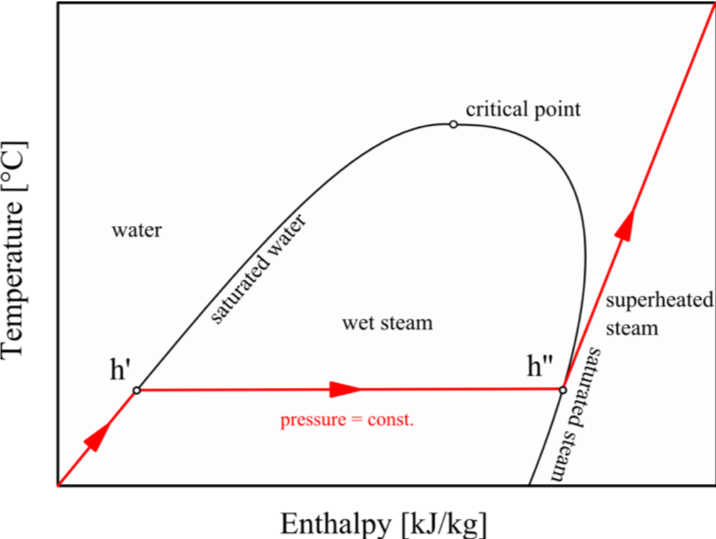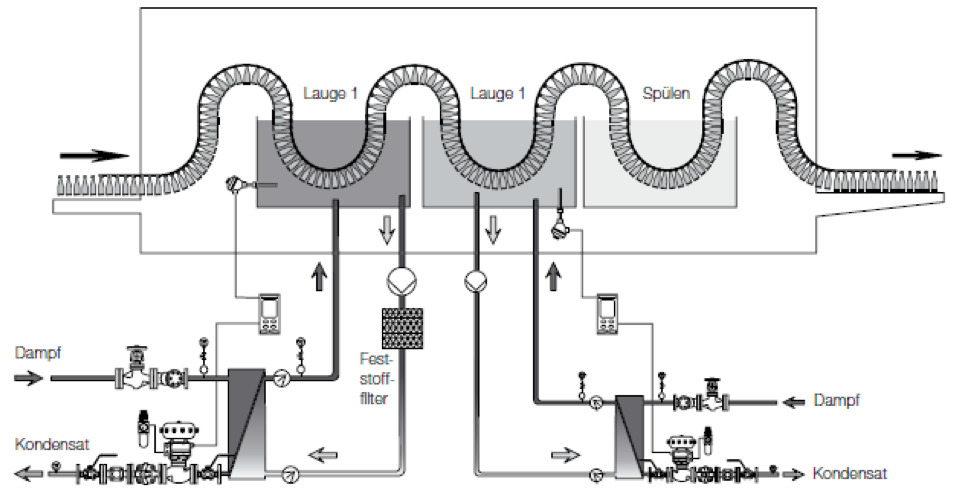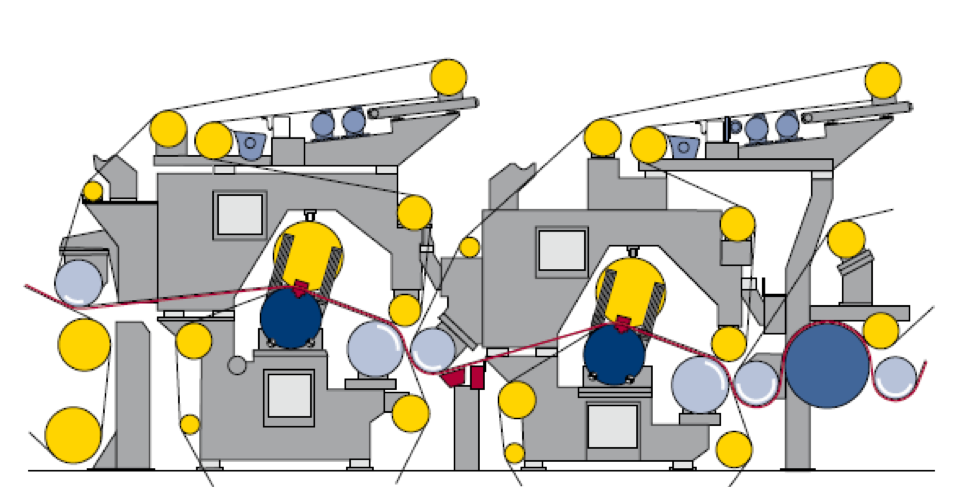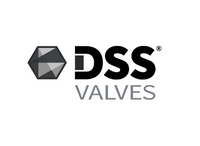DESUPERHEATER VANA

How Is Working ;
Desuperheater Working Principle/ Function: The primary function of a desuperheater water heater is to minimize the temperature of superheated gas and other vapors. This temperature reduction is achieved by the process vapor being brought into direct contact with a liquid such as water.
Superheated steam is a steam that is at a temperature higher than the normal temperature for the steam pressure. For instance, steam at a pressure of 3 bar g has a saturation temperature of 143.762°C. If further heat is added to this steam and the pressure remained at 3 bar g, it would become superheated. So, desuperheating is the method by which superheated steam is restored to its saturated state, or the superheat temperature is reduced.
Why using steam near saturation temperature?
*For some applications there is a danger that the product is destroyed by the superheated steam
*The controlability of saturated steam is better than the controlability of superheated steam
*Better productivity and product quality when the steam temperature is near saturaion temperature

Bottle Washer ;

Steam box control in pulp & paper mill
Function: Heats the water in the sheet, improving drying efficiency and cross directional moisture profile
Improved dewatering results in steam savings or increased production

The physics of desuperheating
There are two basic methods of reducing steam tem- perature: surface cooling and direct injection cool- ing. Surface cooling is performed by means of a heat exchanger: a coolant flows through a series of tubes and superheated steam flows past these tubes, reducing its temperature. This method is very rare- ly used, mainly for applications where the cool- ant must not come into contact with the steam. Coolers of this type are typically bulky, expensive, and difficult to control.
Desuperheating by direct water injection is consider- ably simpler in terms of hardware required and saf- er in its control characteristics. Here, water is injected directly into the steam flow and as it evaporates, the latent heat of the superheated steam is reduced. The heat transfer the steam to the water droplet can be calculated as:
| Q=A*⍺(Ts-Tw)*⍙t | ||
|
Q: amount of heat
|
The smaller the water droplets are, the larger the con- tact area (A) between the steam and the water drop- lets. Therefore, it is very important that the water is atomized in very fine droplets when it is injected into the steam flow. Atomization takes place in two steps: primary and secondary atomization. Primary atomi- zation refers to the atomization by the desuperheater. The breakup of the water droplets by the dynamic forc- es of the steam flow is called secondary atomization. Secondary atomization occurs when the dynamic forc- es trying to deform a water droplet are greater than the surface tension forces that hold the water droplet to- gether. This ratio is known as the Weber number (We):
We=(⍴v2D)/a
⍴ : steam density
v2: relative velocity between the steam and the water
droplet
D: diameter of the water droplet
⍺ : surface tension of the water droplet
Secondary atomization begins to take place at a We- ber number above 12; it occurs faster as the Weber number increases.
Superheated steam can be found in various different applications and industries, ranging refineries, power, chemical, and petrochemical plants to pulp and paper, food and beverage as well as pharmaceuticals. Superheated steam is desirable for many processes; however, downstream of these processes, it may be advantageous to reduce the steam pressure and tem- peratures to improve process efficiency, protect equip- ment, or perform other processes. In industrial settings, this is most commonly done by using a control valve to reduce the steam pressure and a desuperheating noz- zle to reduce the steam temperature. While this typi- cal setup will often perform the task to an acceptable standard, it may also require longer-than-necessary straight pipe lengths, lead to less accurate temperature control, limit the total steam temperature reduction, and limit the range of process conditions in which the system can acceptably perform the desired task. Alter- natively, a steam-conditioning valve (also referred to as a steam-converting valve or steam-desuperheating valve) can be used, which combines the steam pressure control valve with the desuperheater in one unit. Some of the clear advantages of using a steam-conditioning valve as a combined system are superior temperature control, maximum turndown as well as reduced space and construction cost thanks to the compact design.
This article will detail the physics involved in steam desuperheating, the most common desuperheating nozzle types available on the market including their advantages and disadvantages, the functionality of steam-conditioning valves, the increased performance compared to different desuperheating nozzle systems, and practical examples of steam-conditioning valves used in several different industrial processes.
Downstream steam temperature: All water in- jection steam desuperheating systems require a residual amount of superheat in the downstream steam flow to fully evaporate the injected water. The amount of re- sidual superheat required for the system to function is dictated by the design of the desuperheater unit. Very often, the closer the steam temperature is to saturation, the more efficient your process will be because saturat- ed steam has a better heat transfer coefficient and is easier to control than superheated steam
APPLICATION
Although requirements for desuperheaters cover a wide range of applications, the great majority fall into the following standard installations:
Power plant requirements for desuperheated steam supplying units having limited operating temperatures such as auxiliaries, heating systems, heat exchangers and, more recently, dump stations.
To improve heat transfer of surface-type heat exchangers.
Reduction and control of superheated steam, where excess temperatures will harm the product.
Use on boilers, either between superheater stages or at boiler exit, to control superheat temperatures at partial loads.
Use as bypass of bleeder or back pressure turbines to maintain balance between process steam and power requirements.
Miscellaneous applications where balancing or make- up steam is required in reduced pressure systems in refineries and process plants.
ATTEMPERATOR ;
which the tail piece is omitted and the atomized water discharges directly into the pipeline. Suitable for use where lower pressure drop is required and little flow variation is encouraged.
Performans ;
While it is less costly and has negligible pressure losses, it normally does not have the rangeability of the venturi- type unit. Actual turndown ratio is dependent upon a wide variety of factors, such as installation, amount of residual superheat downstream, piping, etc. Normal flow variation is 75% to 15% of flow.
Application ;
Attemperator desuperheater reduce steam temperature by bringing superheated steam into direct contact with water. The steam is cooled through the evaporation of the water.
Attemperators can be mounted either horizontally or vertically and are normally used for relatively steady load conditions where pressure losses must be minimized. These desuperheaters are a modification of the venturi-type unit, without the venturi tail, and offer increased turndown when mounted vertically up.
Operations ;
Water enters the attemperator and is preheated in the circulatory chamber around the water diffuser tube. It is then introduced in many small jets to assist final atomization by the steam flow through the center of the throat. After leaving the throat, the mixture of steam and water enters the main steam flow in a fog-like condition where final heat transfer is achieved without contacting the sidewalls - providing maximum desuperheating effectiveness with minimum of pipe wear. Water pressure into the attemperator should equal steam line pressure.
VENTURI DESUPERHEATERS
A venturi-type, steam atomizing unit with no separate or high pressure steam supply required. Suitable for use under a wide range of conditions, including steady or variable flows. Inlet water pressure need only equal steam pressure. Small pressure drop across unit. Used with or without controls.
Performans ;
Venturi desuperheaters are normally used in areas where atomizing steam is not available. Turndown ratio is dependent upon a wide variety of factors, such as installation (horizontal or vertical), amount of residual superheat, and piping. Depending on exact flow conditions, units are capable of 50% to 5% flow variation. Pressure drop varies between 2 psi and 10 psi.
Application ;
Venturi desuperheaters reduce steam temperature by bringing superheated steam into direct contact with water. The steam is cooled through the evaporation of the water. These desuperheaters are recommended for use under a wide range of conditions, including steady and variable flows. They can be installed horizontally or vertically up. When installed vertically up, turndown ratios can be increased substantially.
Operations ;
Water entering the desuperheaters is preheated in the circulatory chamber around the water diffuser tube and is introduced in many small jets to assist final atomization by the steam flow through the center of the throat. When leaving the throat, the mixture of steam and water enters the venturi section for turbulent mixing prior to entering the main steam line in a fog-like condition without contacting the sidewalls - providing maximum desuperheating effectiveness and a minimum of wear in the discharge piping. The water pressure required should equal the operating steam pressure.
EJECTOR ATOMIZING ;
Steam Ejector, Atomizing Desuperheaters
A steam ejector, atomizing unit with water re-cycle arrangement. For applications where combined reducing- desuperheating station is required and flows vary widely. Steam flow range can be as high as 50 to 1 and greater, depending on operating conditions. Minimum atomizing steam pressure required is about 1.4 times inlet steam pressure, with low pressure drop across unit in most cases.
APPLICATION ;
Desuperheaters serve a wide range of applications. In a combined pressure reducing, desuperheating station where flow rates vary widely, this unit, with adequate controls, provides dependable operation with turndown ratios as high as 50 to 1 and greater, depending on exact operating conditions.
Desuperheaters are recommended for use where sufficient high pressure steam is available to provide the atomizing steam supply. The most frequent application would be in combination reducing-desuperheating stations. The minimum atomizing steam pressure ratio required is 1.4 times the absolute steam pressure through the desuperheater with a minimum atomizing steam pressure of 50 psig. The amount required is constant. (See Table 2 on reverse side for the exact rate.)










